Main menu
Common skin conditions

NEWS
Join DermNet PRO
Read more
Quick links
Adverse cutaneous reactions to psychotropic medications present a significant problem to clinical practice for several reasons:
Erythema multiforme, a hypersensitivity reaction, most often presents as an acute eruption of papules, plaques and blisters on the limbs, soles of the feet and palms of the hands. It is accompanied by an elevated temperature and a general feeling of malaise. Mucosal involvement occurs in erythema multiforme major.
Although usually due to viral infection, erythema multiforme is occasionally caused by a drug, and then it usually occurs within a few days of starting the causative drug. Psychotropic drugs that can cause erythema multiforme include bupropion, clozapine and fluoxetine.

Erythema multiforme
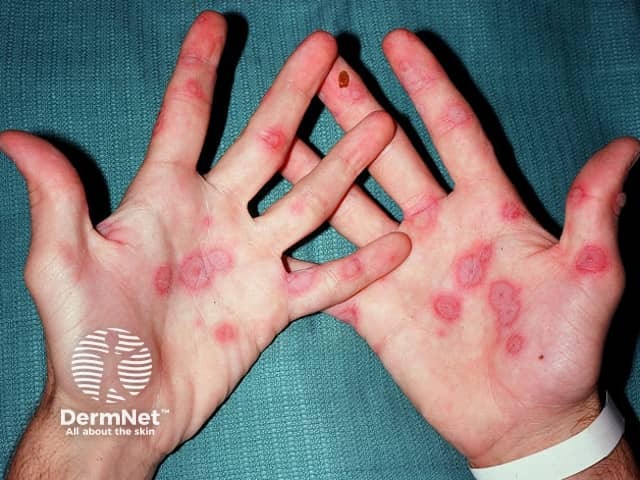
Cutaneous adverse reaction to anticonvulsant, erythema multiforme target lesions
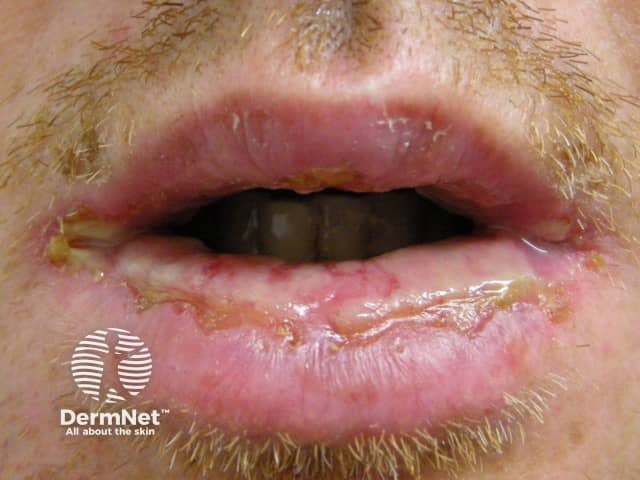
Erythema multiforme
Stevens–Johnson syndrome/toxic epidermal necrolysis (SJS/TEN) is a severe, life-threatening illness with blistering of the mouth and other mucous membranes and widespread macular rash, with detachment of the epidermis from the dermis.
Psychotropic medications like alprazolam, duloxetine, sertraline and anticonvulsant medications can cause SJS/TEN.
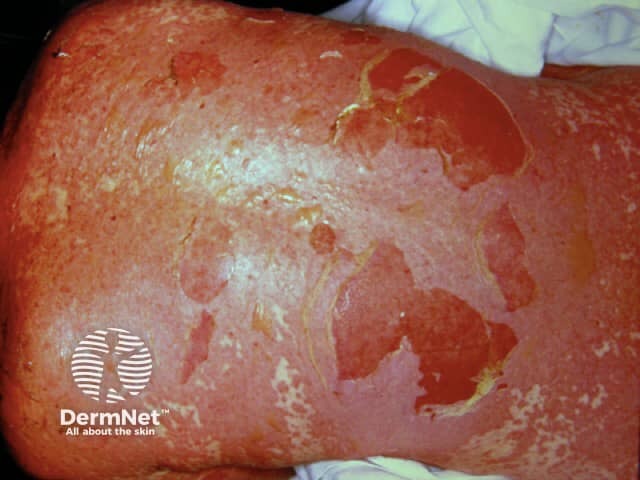
Toxic epidermal necrolysis
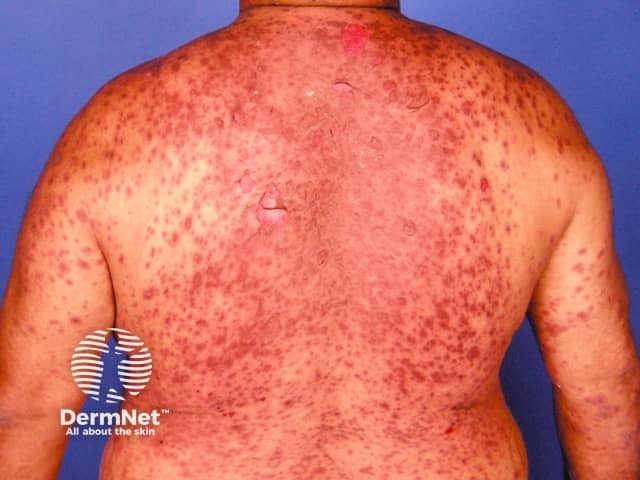
Cutaneous adverse reaction to anticonvulsant, toxic epidermal necrolysis (TEN)

Stomatitis due to toxic epidermal necrolysis
The use of the term erythroderma implies a skin disease affects ≥85% of the body surface. Exfoliative dermatitis describes widespread peeling. Drug-induced erythroderma/exfoliative dermatitis presents with pruritus, discomfort or tightness, redness, and peeling or scaling of the skin. It can lead to cardiac failure due to dilated blood vessels.
Psychotropic drugs that can cause erythroderma include aripiprazole, lamotrigine and lithium.
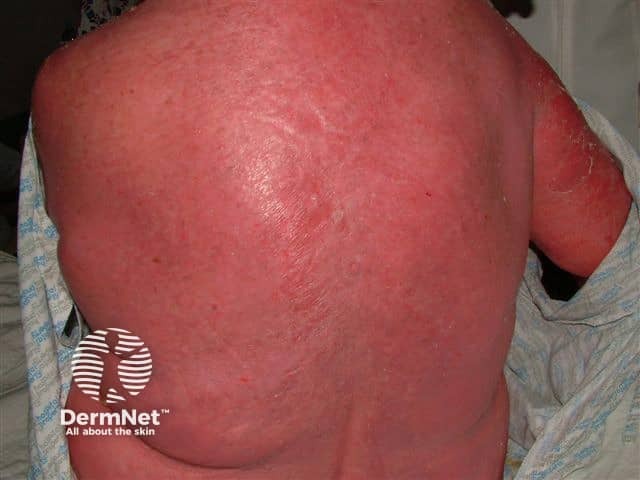

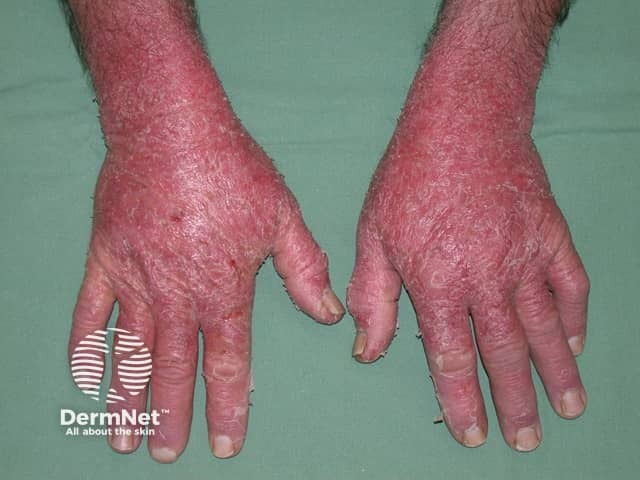
Drug hypersensitivity syndrome is a potentially life-threatening severe adverse reaction to drugs with fever, generalised rash or erythroderma, and systemic involvement.
Psychotropic drugs associated with drug hypersensitivity syndrome include amitriptyline, and anticonvulsants such as carbamazepine and valproic acid.
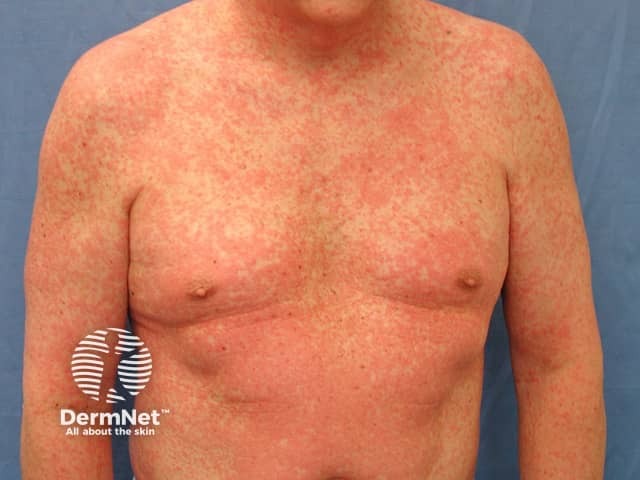
Drug eruption
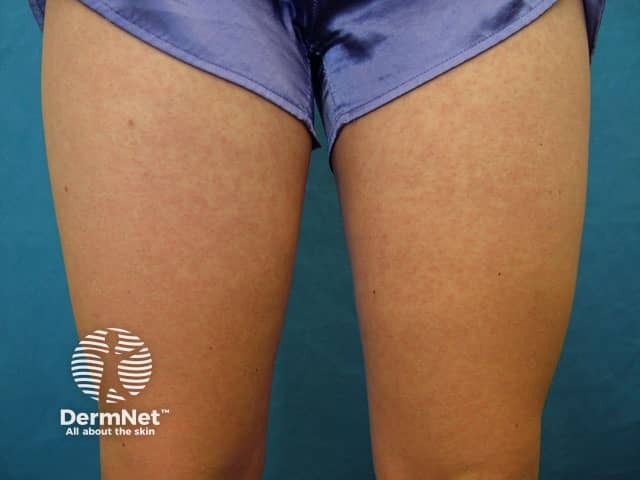
Drug eruption
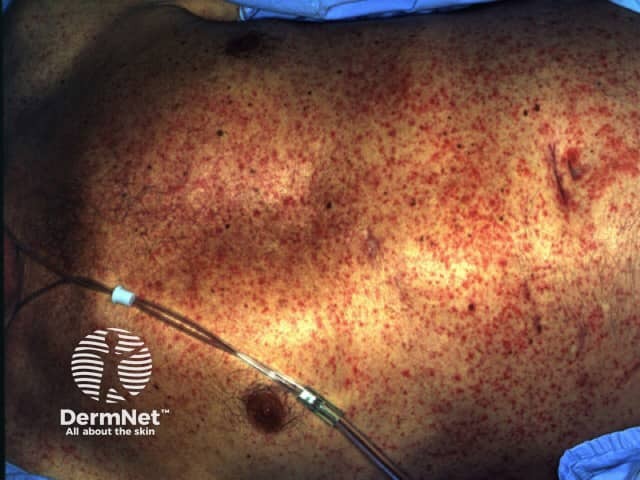
Drug eruption
Cutaneous vasculitis is a group of disorders characterised by inflamed blood vessels in the skin. It presents with palpable purpura or urticarial eruptions, and in some cases, evidence of systemic vasculitis.
Psychotropic medications that can cause vasculitis include oxcarbazepine, methylphenidate and clomipramine.
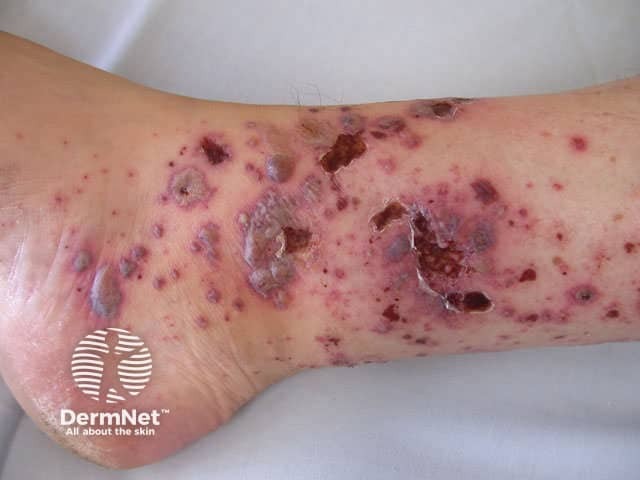
Hypersensitivity vasculitis
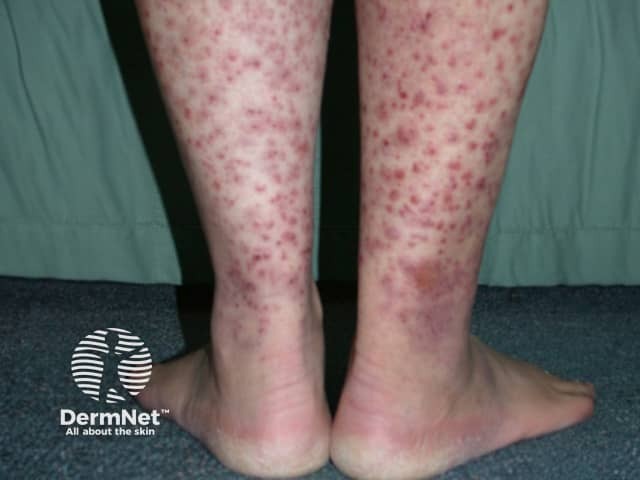
Small vessel vasculitis
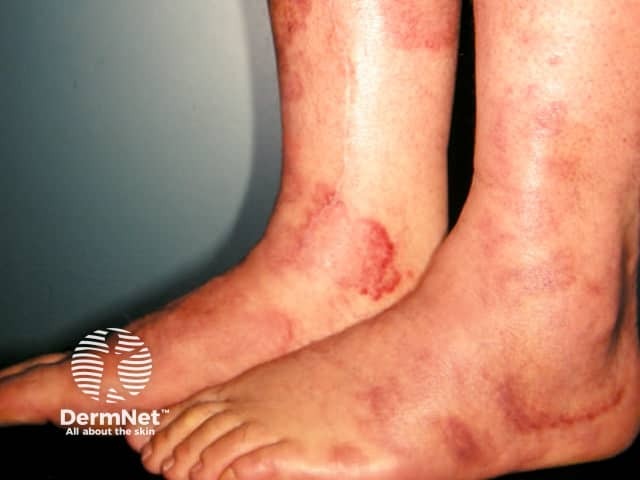
Urticarial vasculitis
Erythema nodosum is an inflammatory disorder presenting with painful, red, indurated plaques, usually on the lower extremities. These plaques result from the inflammation of fat cells under the skin.
Drugs that may cause erythema nodosum include fluoxetine, paroxetine and venlafaxine.

Erythema nodosum
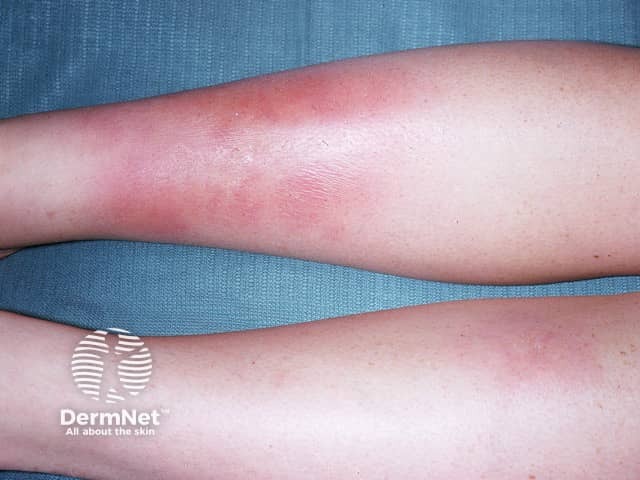
Erythema nodosum

Erythema nodosum
Other cutaneous adverse drug reactions to psychotropic medications include:
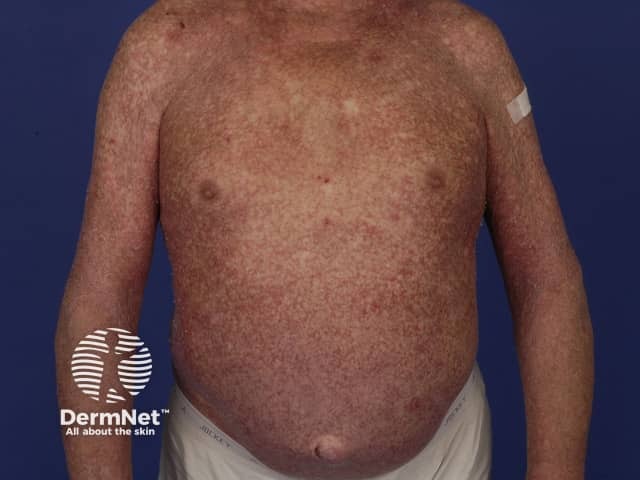
Lichenoid drug eruption
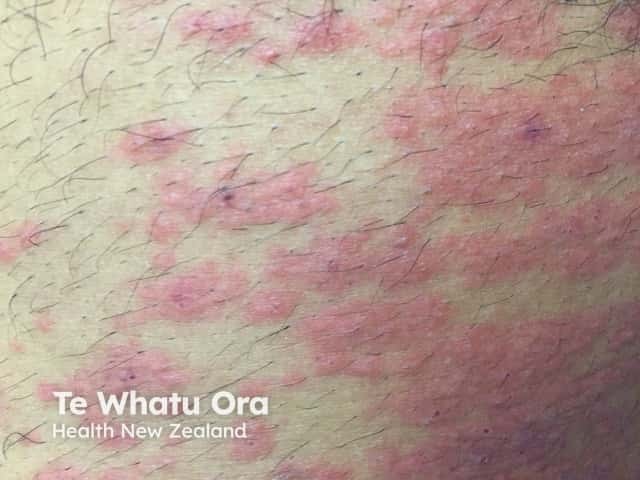
Morbilliform drug eruption
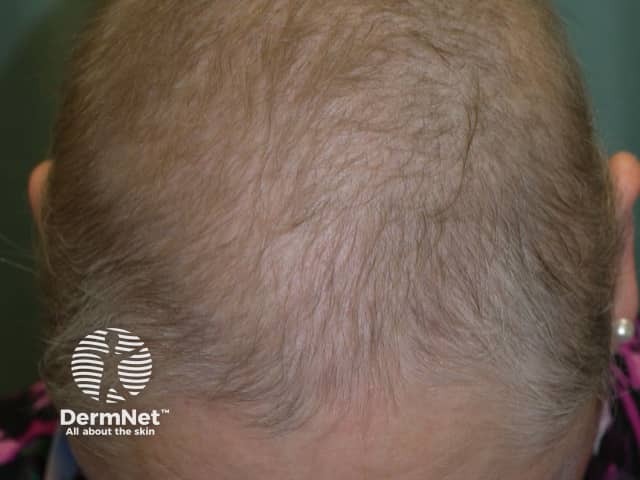
Drug-induced diffuse alopecia
Risk factors for cutaneous drug reactions include:
The risk of cutaneous adverse reaction to a psychotropic drug is reduced by: